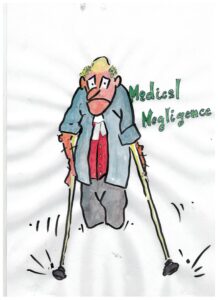The duty of principals to independent contractors
- 2016-10-27
- By whiggs
- Posted in common law, Occupiers negligence
(Source: Leighton Contractors Pty Ltd v Fox Calliden Insurance Limited v Fox [2009] HCA 35;
2 September 2009)
It is plain that the common law does not impose a duty of care on principals for the benefit of independent contractors engaged by them of the kind which they owe to their employees (Stevens v Brodribb Sawmilling Co Pty Ltd (1986) 160 CLR 16). However, it is recognised that in some circumstances a principal will come under a duty to use reasonable care to ensure that a system of work for one or more independent contractors is safe.
The principles were explained by Brennan J in Stevens v Brodribb Sawmilling Co Pty Ltd ((1986) 160 CLR 16 at 47-48 ):
“An entrepreneur who organises an activity involving a risk of injury to those engaged in it is under a duty to use reasonable care in organising the activity to avoid or minimise that risk, and that duty is imposed whether or not the entrepreneur is under a further duty of care to servants employed by him to carry out that activity. The entrepreneur’s duty arises simply because he is creating the risk and his duty is more limited than the duty owed by an employer to an employee. The duty to use reasonable care in organising an activity does not import a duty to avoid any risk of injury; it imports a duty to use reasonable care to avoid unnecessary risks of injury and to minimise other risks of injury. It does not import a duty to retain control of working systems if it is reasonable to engage the services of independent contractors who are competent themselves to control their system of work without supervision by the entrepreneur. The circumstances may make it necessary for the entrepreneur to retain and exercise a supervisory power or to prescribe the respective areas of responsibility of independent contractors if confusion about those areas involves a risk of injury. But once the activity has been organised and its operation is in the hands of independent contractors, liability for negligence by them within the area of their responsibility is not borne vicariously by the entrepreneur. If there is no failure to take reasonable care in the employment of independent contractors competent to control their own systems of work, or in not retaining a supervisory power or in leaving undefined the contractors’ respective areas of responsibility, the entrepreneur is not liable for damage caused merely by a negligent failure of an independent contractor to adopt or follow a safe system of work either within his area of responsibility or in an area of shared responsibility.
It is common in the construction industry for the principal contractor to arrange for the works to be carried out by subcontractors rather than by employing its own labour force.
Among the advantages that accrue to the principal contractor in adopting this model for its undertaking is that it does not incur the obligations that the law imposes on employers. An employer owes a personal, non-delegable, duty of care to its employees requiring that reasonable care is taken.
This is a more stringent obligation than a duty to take reasonable care to avoid foreseeable risk of injury to a person to whom a duty is owed.
While an employer is not vicariously liable for the negligent conduct of an independent contractor, it may incur liability where the negligent conduct occasions injury to its employee.
This is because it will have failed to discharge the special duty that it owes to its employees to ensure that reasonable care be taken, whether by itself, its employees or its independent contractors, for the safety of its injured employee (Kondis v State Transport Authority (1984) 154 CLR 672 at 686-687 per Mason J; [1984] HCA 61; Burnie Port Authority v General Jones Pty Ltd (1994) 179 CLR 520; [1994] HCA 13.). In this case, if the pipe had struck the forklift driver, an employee of Leighton, there may be little doubt as to Leighton’s liability in respect of the injury to him.
The distinction that the common law draws between independent contractors and employees has been the subject of criticism (Northern Sandblasting Pty Ltd v Harris (1997) 188 CLR 313 at 366-367 per McHugh J; [1997] HCA 39. See also the discussion in Hollis v Vabu Pty Ltd (2001) 207 CLR 21 at 36 [32] per Gleeson CJ, Gaudron, Gummow, Kirby and Hayne JJ, 53-58 [84]-[93] per McHugh J; [2001] HCA 44.).
However, as five Justices of this Court observed in Sweeney v Boylan Nominees Pty Ltd ((2006) 226 CLR 161; [2006] HCA 19.), whatever the logical and doctrinal imperfections and difficulties in the origins of the law relating to vicarious liability, the concept of distinguishing between independent contractors and employees is one too deeply rooted to be pulled out (Sweeney v Boylan Nominees Pty Ltd (2006) 226 CLR 161 at 173 [33] per Gleeson CJ, Gummow, Hayne, Heydon and Crennan JJ.).
In particular, and as was emphasised in Sweeney ( (2006) 226 CLR 161 at 172 [29].), the authorities in the HighCourt do not support any principle that “A is vicariously liable for the conduct of B if B ‘represents’ A (in the sense of B acting for the benefit or advantage of A)”.
Earlier, in Scott v Davis ((2000) 204 CLR 333 at 342 [18], 422-424 [268]-[273], 440 [311], 459-460 [357]-[358]; [2000] HCA 52.) the Court refused to recognise an “agent” in a non-technical sense as an actor attracting principles of vicarious liability.
SEARCH BLOG POSTS
LATEST BLOG POSTS
- Updated product safety mandatory reporting guidance for suppliers now available
- Pleading fraud – cause and effect is essential
- Does the Trustee’s right of indemnity have priority over the right of beneficiaries in relation to assets?
- Rules of war (in a nutshell) | The Laws Of War
- MH370 Final Report
Past Blog Posts
- December 2021
- September 2021
- August 2021
- May 2021
- April 2021
- March 2021
- August 2020
- February 2020
- September 2019
- February 2019
- December 2018
- July 2018
- April 2018
- December 2017
- May 2017
- February 2017
- December 2016
- November 2016
- October 2016
- September 2016
- August 2016
- April 2016
- March 2016
- October 2015
- September 2015
- August 2015
- May 2014
- April 2014
- March 2014
- January 2014
Categories
- Appeals
- Artificial Intelligence
- Aviation law
- Banking and Finance Law
- Blogs
- Civil Liability Act
- Class Actions
- Coding for lawyers
- common law
- Consumer Claims (TPA)
- Contract Law
- Contractual Interpretation
- Criminal law
- Deeds
- Docassemble
- duty of care
- Engineering Law
- Equity
- Evidence
- Exclusion Clauses
- Execution of documents
- Expert Witness
- featured
- Financial Services
- Fraud
- Fundraising (Chapter 6D)
- General comment
- Home Building Law
- Insurance
- Legal drafting
- Local Court
- Medical Negligence
- MH370
- Motor Accidents
- Negligence
- Occupiers negligence
- Other
- Personal Injury
- Personal Property Securities (PPSA)
- Pleading
- Practice & Procedure
- Products Liability
- Property
- Real Property
- Reasons for a decision
- Securitisation
- Security (Mortgages & Charges)
- Sentencing
- Swaps & Derivatives
- Teaching
- Transactional Law
- Transfer of financial assets in transactions
- Trusts & Trustee Law
- Uncategorized
- War and Weaponry
- Witnesses
SEARCH BLOG POSTS
LATEST BLOG POSTS
- Updated product safety mandatory reporting guidance for suppliers now available
- Pleading fraud – cause and effect is essential
- Does the Trustee’s right of indemnity have priority over the right of beneficiaries in relation to assets?
- Rules of war (in a nutshell) | The Laws Of War
- MH370 Final Report
Past Blog Posts
- December 2021
- September 2021
- August 2021
- May 2021
- April 2021
- March 2021
- August 2020
- February 2020
- September 2019
- February 2019
- December 2018
- July 2018
- April 2018
- December 2017
- May 2017
- February 2017
- December 2016
- November 2016
- October 2016
- September 2016
- August 2016
- April 2016
- March 2016
- October 2015
- September 2015
- August 2015
- May 2014
- April 2014
- March 2014
- January 2014
Categories
- Appeals
- Artificial Intelligence
- Aviation law
- Banking and Finance Law
- Blogs
- Civil Liability Act
- Class Actions
- Coding for lawyers
- common law
- Consumer Claims (TPA)
- Contract Law
- Contractual Interpretation
- Criminal law
- Deeds
- Docassemble
- duty of care
- Engineering Law
- Equity
- Evidence
- Exclusion Clauses
- Execution of documents
- Expert Witness
- featured
- Financial Services
- Fraud
- Fundraising (Chapter 6D)
- General comment
- Home Building Law
- Insurance
- Legal drafting
- Local Court
- Medical Negligence
- MH370
- Motor Accidents
- Negligence
- Occupiers negligence
- Other
- Personal Injury
- Personal Property Securities (PPSA)
- Pleading
- Practice & Procedure
- Products Liability
- Property
- Real Property
- Reasons for a decision
- Securitisation
- Security (Mortgages & Charges)
- Sentencing
- Swaps & Derivatives
- Teaching
- Transactional Law
- Transfer of financial assets in transactions
- Trusts & Trustee Law
- Uncategorized
- War and Weaponry
- Witnesses




